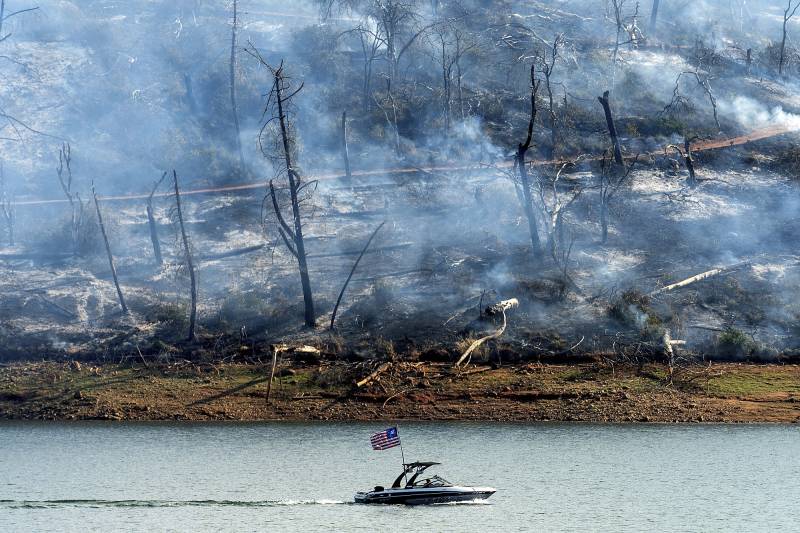Dead brush on the ground across Northern California is “becoming critically flammable,” according to the latest forecast from the National Interagency Fire Center, and “the heat wave will flip the switch in terms of flammability in the live woody fuels across the lower and some mid-elevations.”
That means the heat dried out some of California’s forests enough that they are now primed to burn, edging the state beyond an active grass fire season as wildfires rip through the Klamath and Tahoe national forests.
Many dozens of other smaller fires have ignited and then were quickly suppressed during the past week by some of the 7,000-plus firefighters working across the state, supported by a near-constant deployment of helicopters and planes.
At least 1,197 fires have started across Northern California and 2,396 in Southern California this summer, according to the latest tally from the National Interagency Fire Center (PDF).
After keeping the Royal Fire from running away across Placer County in the Tahoe National Forest near Sugar Bowl with a steady barrage of water and retardant released from planes, officials cleared an area of the dense forest to drop firefighters in using helicopters on Tuesday.
These crews are wielding chainsaws and other hand tools to hack lines around the fire, which is currently 15% contained but only a few hundred acres in size.
In California’s far north, the Shelly Fire continues to churn through the dense Marble Mountain Wilderness near the Pacific Crest Trail and Shelly Lake.
That blaze has consumed more than 8,285 acres and is burning in the vicinity of the communities of Etna and Greenview, threatening more than 4,200 homes and buildings in a situation that Chris Christofferson, forest supervisor for the Klamath National Forest, called “gravely serious” during a community town hall on Monday night.
“I have seen a number of communities like this be threatened by wildfire, whether it was Quincy, or destroyed by wildfire, Greenville and Paradise,” Christofferson said. “And so when I look at this, I am very concerned.”
Fire officials have ordered bulldozers and hand crews to construct a series of pockets, fire breaks they hope will keep it from threatening the rural communities nearby.
“Some of you are probably in an evacuation zone; I am too. Please heed the warnings,” Siskiyou County Supervisor Ray Haupt said at the town hall. “I’ve lost six friends in recent years in Siskiyou County because they refused to go. These fires are nothing to mess around with. I can help you rebuild homes, but I can’t bring friends back to life.”
